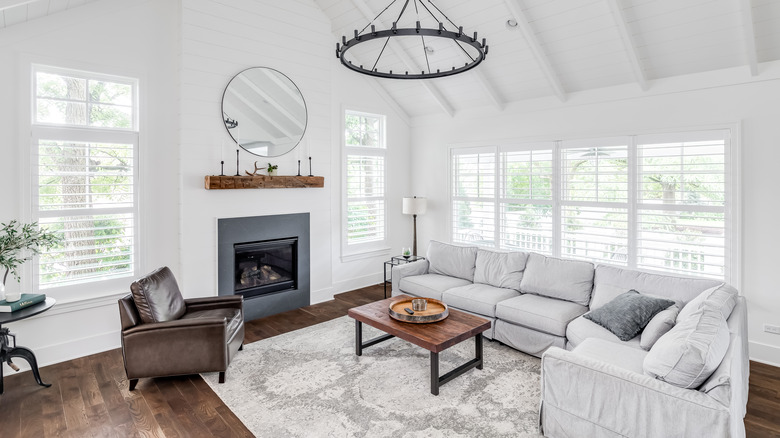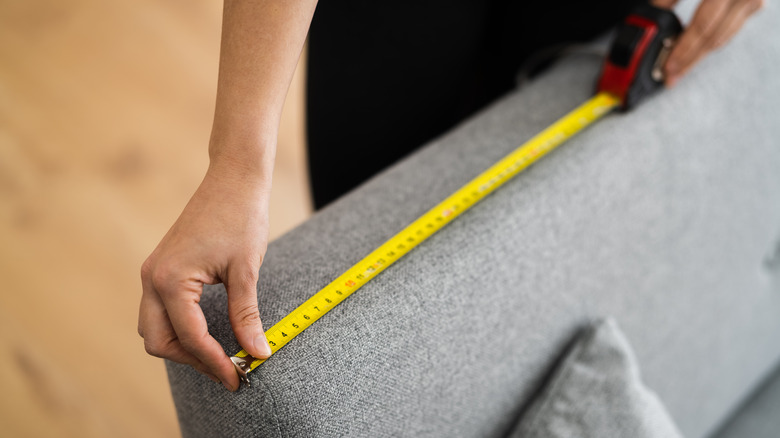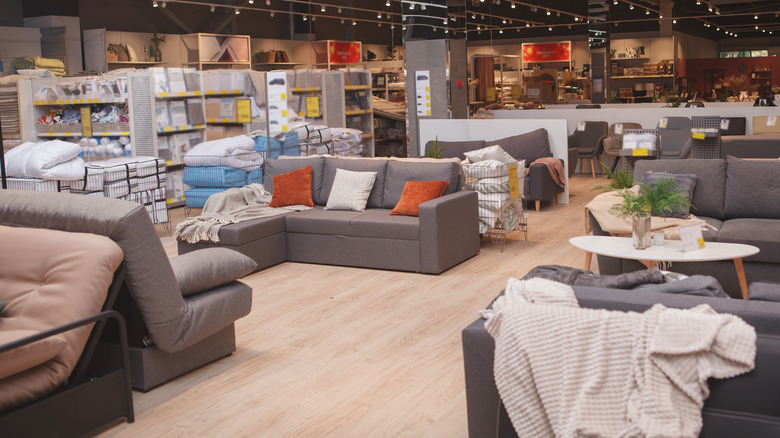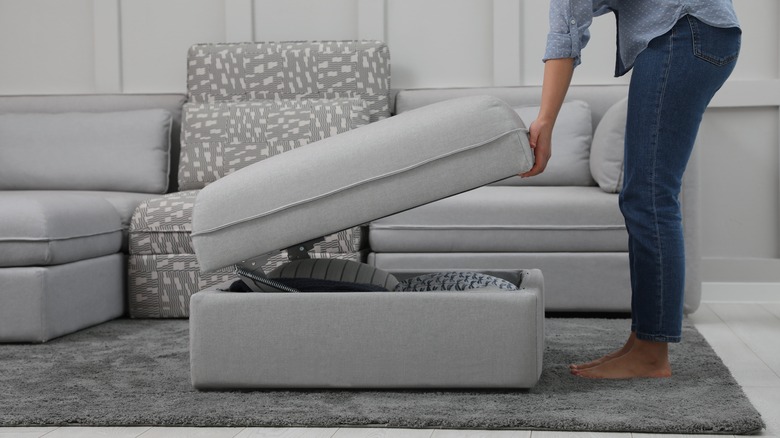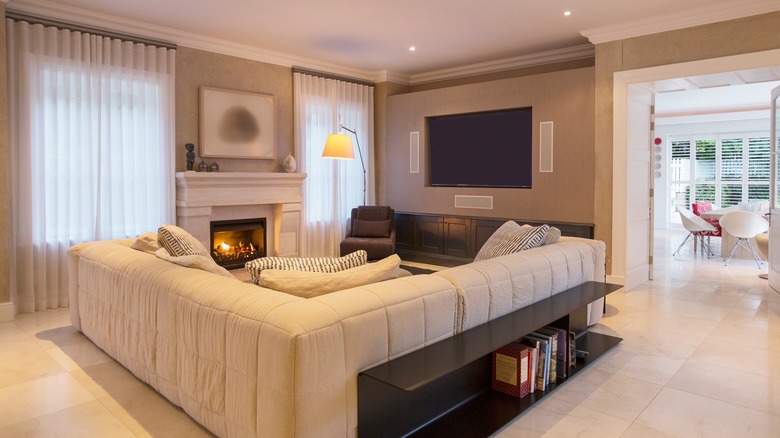How To Choose The Perfect Sectional For Your Space
When you buy a new sectional for your home, you are making an investment that will hopefully last for years. You can make some decisions as you shop, but some should be determined ahead of time. You certainly do not want to purchase a piece of furniture that is too big for your space, nor do you want something that suddenly seems absurdly small when you get it home. A bit of preparation before you step into the furniture store can prevent a lot of headaches and disappointment. No one wants to have to return a large piece of furniture.
One of the essential tools you need for furniture shopping is a tape measure. You will also need a pen and paper or a note-taking app to record important measurements. Angi suggests arriving at the store prepared to haggle. Prices are not always set in stone, and salespeople who work on commission might have some flexibility on the price of the item you want — the most important thing when haggling is to be respectful while you try to get the best deal.
Measure your space
The first step in selecting a sectional is to measure the space the new piece will occupy. Rooms to Go states you should establish your desired seating arrangement first, so you know exactly the area you want to fill. Use your tape measure to determine the size range that will fit.
When you measure, make a note of the length, width, depth, and height ranges that would be acceptable for your space. If you are replacing a sofa or sectional, use that as a guide. Do you want a higher back? Something not as deep? It's unlikely you'll find a sectional with the exact set of measurements you want, so having a range will help you when you get to the store. If you're looking for a sectional that is about 110-inches wide, play around with the measuring tape and decide what maximum and minimum lengths would work. For this example, a minimum of 95-inches and a maximum of 115-inches gives you a good range to consider while shopping. Apply the same rule to the rest of your measurements, and be sure to note all your size ranges to take when you're shopping. This is also helpful if you are shopping online.
Determine your style
If you are deciding on a sectional with another person, determining what you like and do not like before you go shopping can prevent an embarrassing public tiff or frustrating experience. You might already have a style and not realize it. Look around the furniture you love in your home. Do you gravitate toward clean lines and neutral colors? You might prefer a more modern sectional, according to Bobby Berk. If this sounds like you, look for a symmetrical piece with straight arms and square cushions. If you favor a more traditional style, a sectional with nailhead trim and rounded arms may be what you want.
If you are unsure what you like, a scouting trip to a furniture store or online shopping might help you choose a style. Take photos of what you like or save photos from the internet — they do not have to be sectionals — to take shopping with you. By showing those photos to the salesperson, they can use those standard design elements to find the right style for your home.
Select special features
Are you looking for a standard L-shaped sectional, or would you like some extra features? Sectionals come with a variety of options from which to choose. Some have a chaise lounge on one end, while others have multiple recliners. You can even select a piece with flip-down cup holders. Sectionals come in L-shapes, U-shapes, and curves.
Consider a modular option if you live in an apartment, would like a sectional for an upstairs room, or just want multiple arrangement options. Many of these pieces look like standard sectionals, but each seat is a separate piece, so they are much easier to get upstairs and can be arranged one way for everyday use and rearranged for entertaining, according to Zin Home. Modular sectionals also often come with ottomans that can be used as a chaise lounge or moved to the side. An added benefit to modular options is they often have hidden storage spaces. This type of furniture can be shipped straight to your home — no moving men required — and because they are individual pieces, they are light enough for most people to manage with a bit of help from a friend.
Choose a material
There are several things to consider when selecting a material for your sectional. Of course, you want it to look nice, but if you do not select the appropriate level of durability, it will not look nice for long. Leather is a classic material that is easy to clean, and if you buy good quality leather, it will last a long time with a bit of maintenance. Faux and bonded leathers are also available, but they tend not to last as long, according to BOTD. Although real and faux leathers are easy to clean, they also show pet damage, like cat scratches, and may be difficult to fully restore. Revolution Performance Fabrics states fabrics like polyester and polypropylene are affordable and durable options.
If you are looking for comfort and softness, consider natural fibers like linen or cotton. For a kid-free, pet-free home, silk is exceptionally luxurious. And, you cannot beat velvet for opulent beauty and comfort.
Consider your budget
Having a wish list is great while you shop, but so is having — and sticking to — a budget. It is easy to fall in love with a sectional at the store, but if the price tag makes you nervous, it's best to move on to a more affordable option. Bank Rate explains buyer's remorse as feeling nervous or uncomfortable after making a big purchase. A sectional is an investment, but not one you want to regret. You may have fallen in love with a pricy option while shopping, but if it makes you anxious at home, you cannot be comfortable.
Avoid buyer's remorse by making your checklist and taking as much time as you need to shop around for the right sectional that ticks all your boxes and keeps you within your budget. With a plan in place, you will find the perfect sectional for your space and your bank account.
